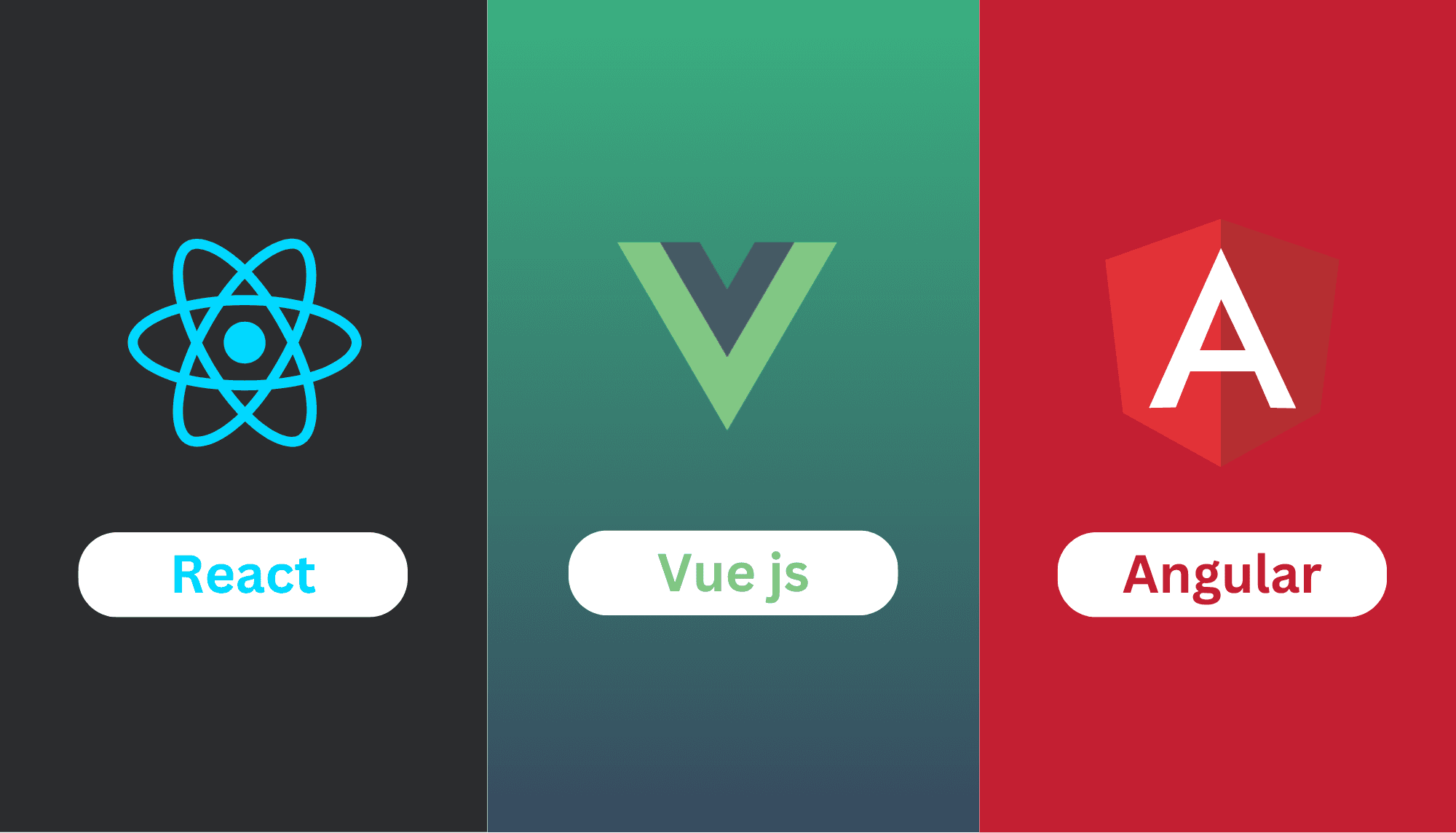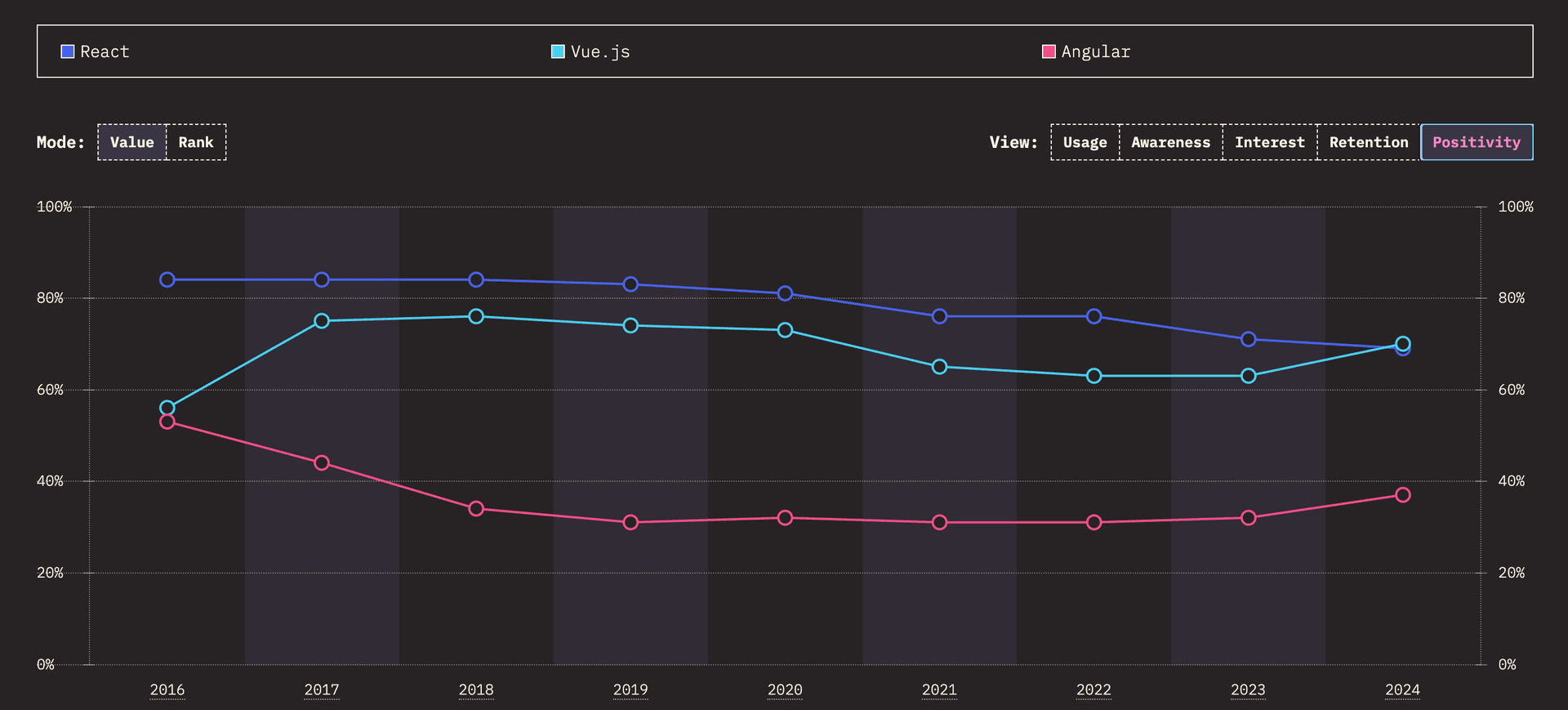React vs Vue vs Angular: A 2025 Comparison

Table of Contents
Overview of Frameworks

React, Vue, and Angular remain the most prominent JavaScript frameworks in 2025. With frequent updates and shifting developer sentiment, understanding their strengths, weaknesses, and real-world usage is essential for any long-term tech stack decision.
2024 Stats Overview





React: Awareness: 99% | Interest: 34% | Usage: 82% | Retention: 75% | Positivity: 47%
Vue.js: Awareness: 99% | Interest: 48% | Usage: 51% | Retention: 87% | Positivity: 42%
Angular: Awareness: 99% | Interest: 17% | Usage: 50% | Retention: 54% | Positivity: 23%
Key Insight: React leads in usage but sees lower positivity and interest. Vue is climbing with excellent retention, while Angular continues steady use in enterprise despite low sentiment.
Architecture and Design
Each framework approaches application design differently:
- React: A view-layer library with flexibility in choosing tools for routing, state, and more. You piece it together as needed.
- Vue: A progressive framework — start small or scale up. Vue 3's Composition API improves logic reuse.
- Angular: A full-featured framework. Everything from routing to testing is included, ideal for structured, large-scale apps.
Learning Curve
How quickly developers can onboard:
- React: Moderate learning curve. JSX is initially unfamiliar, and the ecosystem’s flexibility can be overwhelming for beginners.
- Vue: Easiest to learn. Clean structure and single-file components make it ideal for newcomers.
- Angular: Steep learning curve. Requires TypeScript knowledge, familiarity with RxJS, and understanding CLI and modules.
Performance Comparison
All three are fast for most use cases, but here's how they differ:
- React: Virtual DOM enables quick updates, especially for dynamic UIs.
- Vue: Also uses a Virtual DOM, but its optimized reactivity system can offer performance benefits in some scenarios.
- Angular: Larger in size and uses real DOM by default. However, AOT (Ahead-of-Time) compilation helps improve speed.
Ecosystem and Tooling
Tooling determines the developer experience:
- React: Extremely modular. Pair with Next.js for SSR, Tailwind or MUI for UI, and data libraries like React Query or Apollo.
- Vue: Vite and Vue CLI provide excellent DX. Nuxt.js enables SSR. Devtools offer strong debugging features.
- Angular: Comes with everything built-in — CLI, RxJS, HTTP client, forms, and testing tools. Ideal for large, complex apps.
Real-world Use Cases
Where are these frameworks being used today?
- React: Facebook, Instagram, Airbnb, Uber, WhatsApp Web.
- Vue: Alibaba, Xiaomi, 9GAG, GitLab (partially).
- Angular: Google, Microsoft Office Web, Deutsche Bank, PayPal.
Trends: React dominates among startups and product-focused teams. Angular powers large-scale enterprise apps. Vue is loved by small-to-mid companies, especially in Asia.
Community and Job Market
A strong community means better learning resources and job opportunities:
- React: Most popular globally. Massive community and extensive job listings.
- Vue: Rapid growth and a passionate developer base. Popular on GitHub with many community-built plugins.
- Angular: Reliable in enterprise settings. Many job roles require Angular for legacy and structured systems.
Usage at Work

React: Used by 66.83% of professionals — it remains the top framework in production environments.
Vue: 30.99% use it at work, especially common in startups and lightweight apps.
Angular: 28.3% usage in the workplace, primarily in larger organizations.
Conclusion: React is the go-to for most developers. Vue is rising in popularity, and Angular holds steady in corporate stacks.
Conclusion
Every framework shines in different areas:
- React: Great for flexibility, scalability, and talent availability. But be mindful of ecosystem fatigue.
- Vue: Combines simplicity with power. High satisfaction and retention make it a balanced choice.
- Angular: Ideal for structured, large-scale enterprise apps. Comes ready with everything but may be heavier to manage.
In the end, base your decision on your team's experience, project scale, and long-term maintenance goals.
Contact Our Team
Dribbble